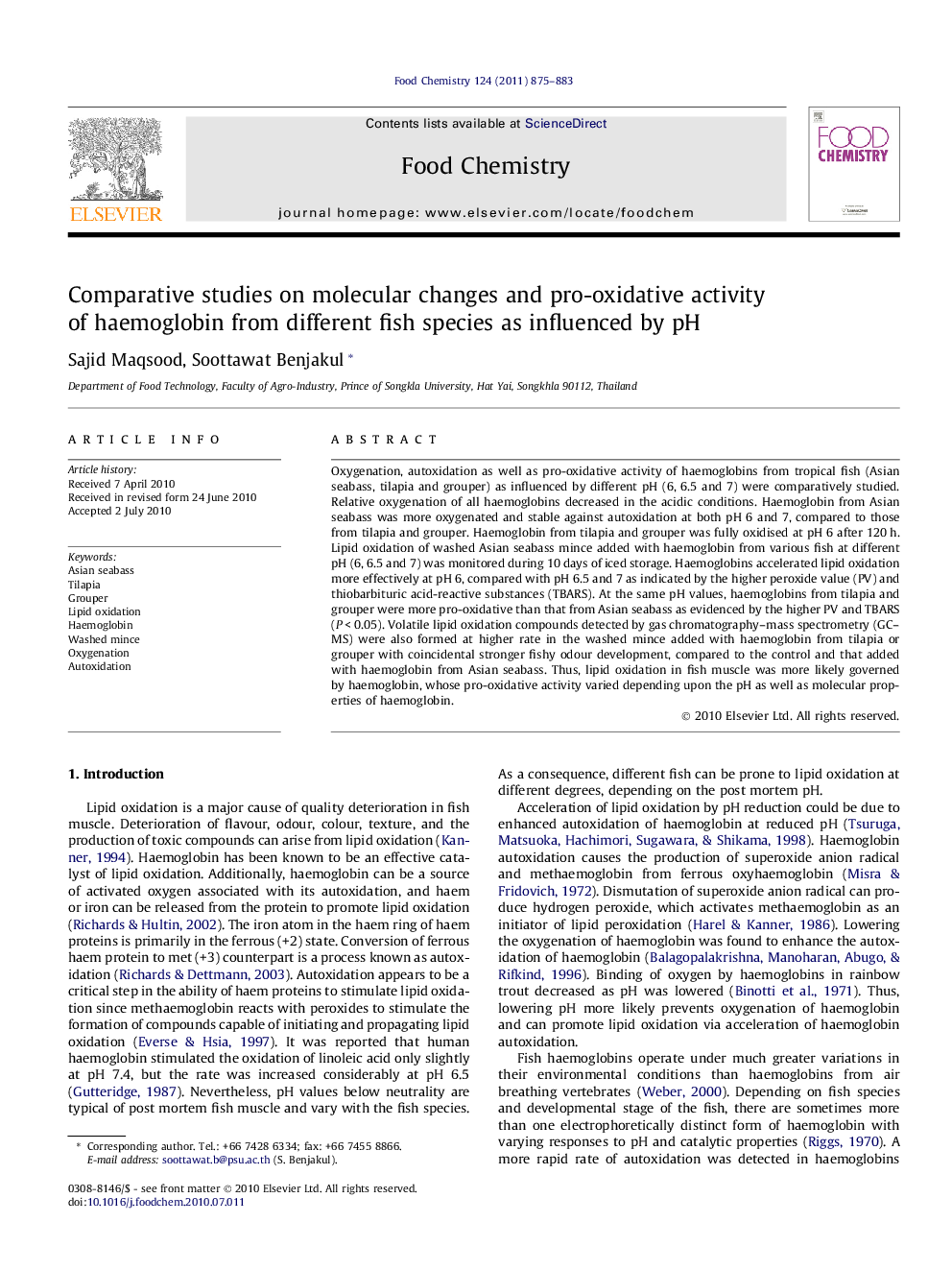| کد مقاله | کد نشریه | سال انتشار | مقاله انگلیسی | نسخه تمام متن |
|---|---|---|---|---|
| 1185677 | 963412 | 2011 | 9 صفحه PDF | دانلود رایگان |

Oxygenation, autoxidation as well as pro-oxidative activity of haemoglobins from tropical fish (Asian seabass, tilapia and grouper) as influenced by different pH (6, 6.5 and 7) were comparatively studied. Relative oxygenation of all haemoglobins decreased in the acidic conditions. Haemoglobin from Asian seabass was more oxygenated and stable against autoxidation at both pH 6 and 7, compared to those from tilapia and grouper. Haemoglobin from tilapia and grouper was fully oxidised at pH 6 after 120 h. Lipid oxidation of washed Asian seabass mince added with haemoglobin from various fish at different pH (6, 6.5 and 7) was monitored during 10 days of iced storage. Haemoglobins accelerated lipid oxidation more effectively at pH 6, compared with pH 6.5 and 7 as indicated by the higher peroxide value (PV) and thiobarbituric acid-reactive substances (TBARS). At the same pH values, haemoglobins from tilapia and grouper were more pro-oxidative than that from Asian seabass as evidenced by the higher PV and TBARS (P < 0.05). Volatile lipid oxidation compounds detected by gas chromatography–mass spectrometry (GC–MS) were also formed at higher rate in the washed mince added with haemoglobin from tilapia or grouper with coincidental stronger fishy odour development, compared to the control and that added with haemoglobin from Asian seabass. Thus, lipid oxidation in fish muscle was more likely governed by haemoglobin, whose pro-oxidative activity varied depending upon the pH as well as molecular properties of haemoglobin.
Journal: Food Chemistry - Volume 124, Issue 3, 1 February 2011, Pages 875–883